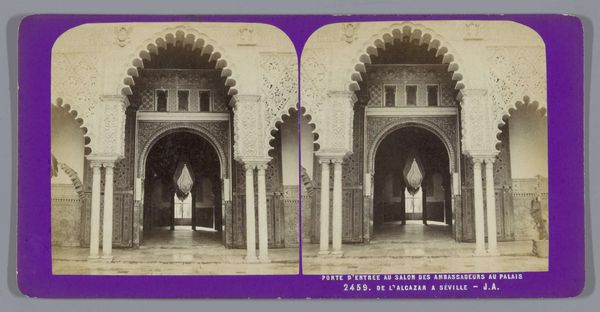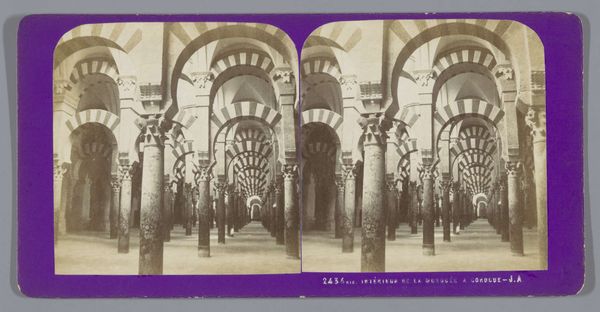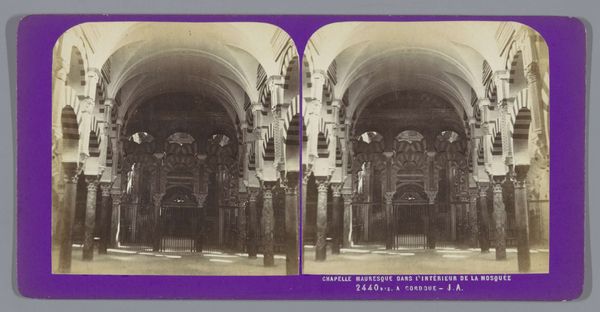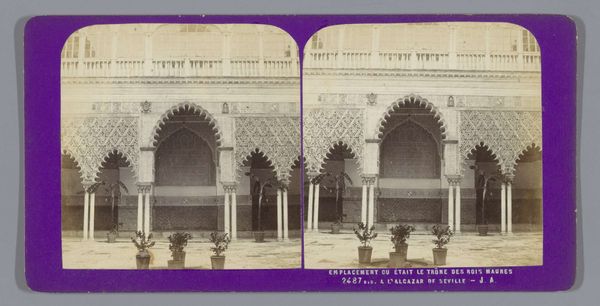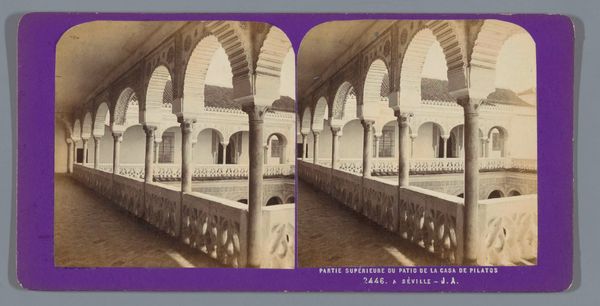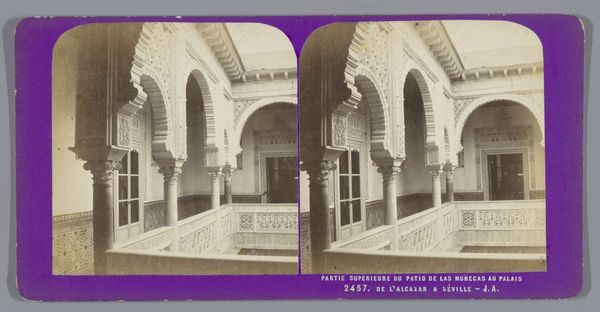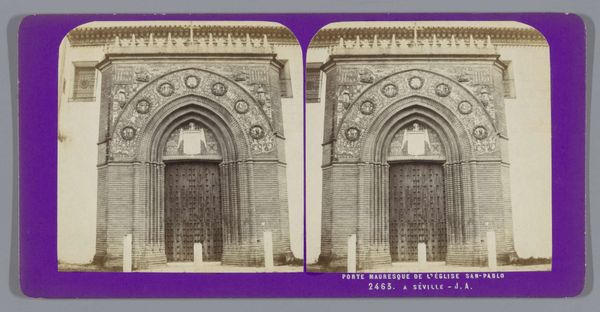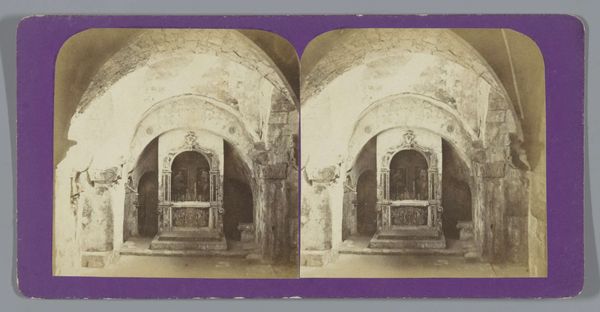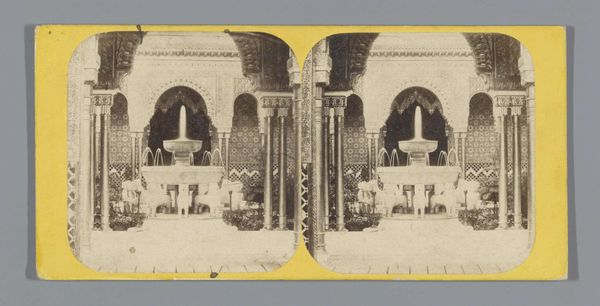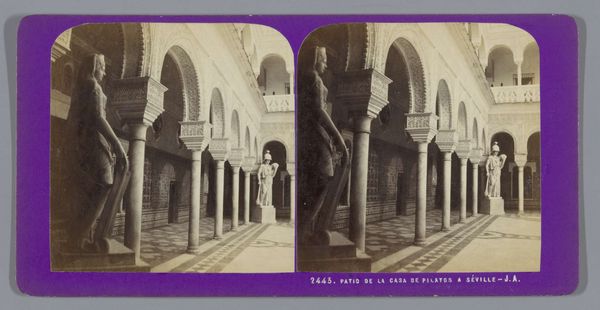
Gezicht op de Patio de las Muñecas en de Salón de Embajadores in het Alcazar in Sevilla 1862 - 1876
0:00
0:00
print, photography, architecture
# print
#
landscape
#
perspective
#
photography
#
geometric
#
framed image
#
arch
#
islamic-art
#
architecture
Dimensions: height 85 mm, width 170 mm
Copyright: Rijks Museum: Open Domain
Editor: This stereoscopic photograph, "Gezicht op de Patio de las Muñecas en de Salón de Embajadores in het Alcazar in Sevilla" by Jean Andrieu, dated between 1862 and 1876, presents this intricate architecture in such detail. It feels like looking into a dollhouse, or maybe a stage set, something unreal. What captures your attention most about this image? Curator: What's immediately striking is how this photograph presents Islamic architecture to a Western audience in the 19th century. Think about the role of photography at that time – it’s a tool for documentation, certainly, but also for shaping perceptions. Consider how Andrieu chooses to frame this space: is he emphasizing the "exotic" otherness of the Alcazar, or is there a respectful attempt to capture its beauty? How might this image have influenced the understanding, or misunderstanding, of Islamic art and culture in Europe? Editor: I hadn't considered that aspect. I was more focused on the purely visual – the receding arches and geometric patterns. But now that you mention it, the way it’s presented does seem… curated for a specific gaze. Curator: Exactly! And that gaze isn't neutral. Photography in this era participated in colonial projects by visually "possessing" and categorizing the world. It's interesting to consider the power dynamics at play, who gets to look, and what narratives are being constructed through these images. Editor: So, even a seemingly objective image like this is embedded within a particular social and political context? It makes me wonder about the other ways the Alcazar was represented and consumed by Europeans at the time. Curator: Precisely. It serves as a reminder that art and visual culture aren't isolated entities; they are actively shaping, and being shaped by, the world around them. Considering that public role that this photography plays is important in how we approach and try to learn from its impact. Editor: This has given me a whole new perspective on how to interpret photographs of historical architecture! Curator: Glad to hear it, questioning how imagery functions politically and socially allows one to see the past in richer depth.
Comments
No comments
Be the first to comment and join the conversation on the ultimate creative platform.

